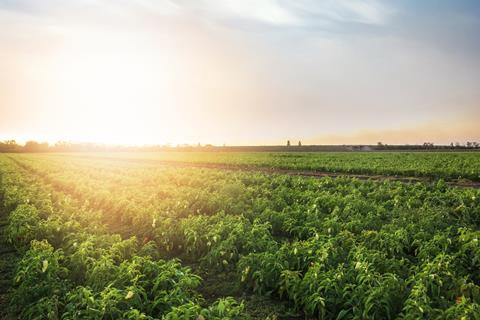Group’s climate action targets designed to improve life and add value throughout the food value chain
Earlier this year, Greenyard submitted its carbon reduction targets to the independent Science Based Targets initiative (SBTi), a partnership between the UN Global Compact, the World Resources Institute (WRI), CDP and the Worldwide Fund for Nature (WWF).

The SBTi assessed Greenyard’s carbon commitments, the applied methodology and target setting against the Paris Climate Agreement – aimed at limiting global warming to 1.5°C.
After careful review, the SBTi has now validated Greenyard’s targets to reduce its direct (scope 1 and scope 2) emissions by 70 per cent by 2030, as well as its indirect (scope 3) emissions.
For the latter, Greenyard has said that it will focus on its larger suppliers with the aim to encourage them to commit to a science-based target approach themselves.
This should cover 70 per cent of Greenyard’s spend in purchased goods and services and the related up- and downstream transportation and distribution.
“We want to be a driver towards more sustainable food value chains,” said Florens Slob, group sustainability and innovation director at Greenyard. ”Teaming-up with the SBTi front-runners and having our carbon reduction efforts reviewed by SBTi was therefore self-evident.
”With Greenyard, we are a trusted partner for our retail customers as they continuously focus on the climate impact of the entire value chain,” Slob continued.
“Our business, fruit and vegetables, is actually part of the solution. Including more fruit and vegetables in your daily diet is the best choice for the planet and for your personal health. And if we want to secure healthy produce in the future, we need favourable climate conditions, healthy soil and a good biodiversity. Healthy products produced in a sustainable way is a win-win for everyone in the value chain.”
Greenyard initially targets to lower its scope 1 and scope 2 emissions by 50 per cent by 2025. These types of emissions are directly owned sources like the energy used in distribution centres and factories or the fuel used for Greenyard trucks.
It said that its long fresh sites, specialised in frozen and prepared fruit and vegetables, require the most energy during the handling of the products. Here, Greenyard puts extra focus on energy reduction and for example heat recovery from the production processes.
By 2030 Greenyard is aspiring to 70 per cent reduction of its carbon footprint via a range of additional actions, such as testing fuel saving truck tires and alternative fuel types, a full electric lease policy and systematically replacing cooling installations with more sustainable alternatives.
To go beyond the 70% reduction, the company explained that it would also need to gradually step away from using natural gas – a process that it said it was investigating already.
Next to the direct emissions (scope 1 and 2), Greenyard is also looking at its indirect (scope 3) emissions. For this, the company noted that it was working closely with its partners and suppliers in the whole chain.
This starts with its network of growers, as they use machinery at their farms, fertilizer, crop protection but also packaging and transport, it said,
”Greenyard wants to use its unique position as a central connector in the food value chain to convince all relevant stakeholders to set similar science-based carbon reduction targets,” the company stated. ”Some of the bigger suppliers do this already, accounting for around 10 per cent of Greenyard’s spend in purchased goods and services today.
“By accelerating on this path, the company aims to reach carbon neutrality by 2050, at the latest.”



